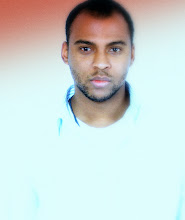This article was sent to you from Bombastic4000@gmail.com, who uses Reuters Mobile Site to get news and information on the go. To access Reuters on your mobile phone, go to:
http://mobile.reuters.com
Google CEO talks of good, evil and monopoly fears
Thursday, Jun 12, 2008 8:1AM UTC
By Eric Auchard
SAN FRANCISCO (Reuters) - Google Inc Chief Executive Eric Schmidt on Wednesday detailed his theory of competition in the Web industry while saying Google's famous mantra of "Don't be evil" is often misunderstood.
In an on-stage interview with writer Ken Auletta of the New Yorker magazine, Schmidt said "Don't be evil" is meant to provoke internal debate over what constitutes ethical corporate behavior, rather than representing an absolute moral position.
"We don't have an 'Evilmeter' we can sort of apply -- you know -- what is good and what is evil," Schmidt said before an audience of media industry professionals at an event sponsored by Syracuse University's Newhouse School in San Francisco.
On other fronts, Schmidt said Google was taking a patient view to making money from online video advertising, while it sees mobile phones attracting the most lucrative ad rates.
Google is moving to transform YouTube, its popular online video-sharing site, into a money-maker via new forms of advertising it will unveil over the next year, Schmidt said.
He was cautious about how profitable this might prove to be. For now, YouTube's video traffic consumes the majority of Google's outgoing network bandwidth. But he said it could possibly lead to the "creation of a whole new industry."
"We don't yet know how we are going to make significant amounts of money on YouTube," Schmidt said. "But it seems obvious that we should be able to make some money from this."
His optimism is based on two key facts: "We know people are watching it" and "We have the luxury of time to invest."
Speaking of the emerging market for Web-based advertising on mobile phones, Schmidt said the vast majority of Google searches on mobile phones were done on Apple Inc's year-old iPhones, which prominently feature a Web browser.
"Mobile looks like it will ultimately be the highest of ad rates," because ads can be targeted by user location, he said.
DEBATING CORPORATE EVIL
When he first joined Google as CEO seven years ago, Schmidt acknowledged thinking the "Don't be evil" phrase was a "joke" being played on him by founders Larry Page and Sergey Brin.
Schmidt recalled sitting in Google's offices later in 2001 when an engineer interrupted a strategy discussion over a planned advertising product by saying, "That is evil."
"It is like a bomb goes off in the room. Everything stopped. Everyone had a moral and ethical conversation, which by the way, stopped the product," Schmidt said.
"So it is a cultural rule, a way of forcing a conversation, especially in areas which are ambiguous," he said of how the mission statement works in practice at Google.
Schmidt reaffirmed that the company's primary goal is not to make money selling ads, whether it is banner ads or ads on Web searches, online video, TV and mobile phones.
"The goal of the company is not to monetize everything, the goal is to change the world ... We don't start from monetization. We start from the perspective of what problems do we have," he said, referring to big, world-class problems.
Apart from its main business, Google also backs, through its philanthropic arm, Google.org, efforts to develop renewable energy, prevent disease and promote government transparency.
But with its growing dominance of the search market -- the starting point for many Internet users -- Google increasingly faces comparison to arch-rival Microsoft Corp, with its long-standing domination of the computer software market.
Google has weathered criticism from human rights activists for doing business in China and over privacy issues that spring from the mountains of data its computers collect on Web users.
THEORY OF COMPETITION
Speaking to reporters following the interview with Auletta, Schmidt challenged the notion that Google dominated the Web.
He said that while Google may dominate the market for text-search advertising against weaker cross-town rival Yahoo Inc, Yahoo is the leader in the hot online display ad market, preferred by corporate marketers for brand marketing. He noted it is a larger market than text-based search ads.
Schmidt declined to comment on whether talks had cooled with Yahoo on an ad partnership deal that would pose an alternative to talks between Microsoft and Yahoo on various potential partnership deals, including ads.
He argued mature industrial markets allow big players both to compete and cooperate, citing IBM as a model. With an antitrust decree hovering over its head for decades, IBM evolved a strategy of becoming a components supplier that enabled many other high-tech companies to thrive.
Schmidt contrasted this style of open competition to what amounts to a winner-take-all strategy by Microsoft to dominate the Windows software market and related business software.
"The Microsoft model, where it is the only competition, is not, in fact, the model in mature industrial structures," Schmidt said. "The mature industrial structure is that 'piece parts' are built by people in reasonably fair and open ways."
"You have to resolve in your mind the fact that there is competition and collaboration in mature industries."
(Editing by Braden Reddall)


